The sound of rotor blades chopping through the air above western New York might, for some, signify the worst day of someone’s life. But from another perspective, it offers reassurance that there is a service in the area that is dedicated to helping people and saving lives. That service is non-profit air medical provider Mercy Flight.
Headquartered in Buffalo, New York, with three other New York state bases in Springville, Olean, and Batavia, Mercy Flight — along with its ground ambulance division, Mercy Flight EMS — is a program that is truly there for the people.
“To know that you’re a part of impacting somebody’s outcome on one of the worst days of their life is just so gratifying,” said Margie Ferrentino, executive vice president at Mercy Flight. “And it doesn’t always go well, but what we know and find comfort in is that no matter what the outcome, hopefully the family and loved ones know that we gave the patient every chance possible… and that we were there for them.”
Mercy Flight began operations in 1981, originating from an idea that founder/president Doug Baker had while running a ground ambulance service that transported high-risk babies and mothers from all over western New York and northern Pennsylvania. During his time transporting acute patients by ground, Baker realized it was taking too long to get the patients to the care they needed. “I thought to myself, this would be a great situation for a helicopter,” he recalled. “I had some experience in the [U.S.] Army flying — some. I was no expert. But I got this idea. . . . And I thought if I could break even, it would be terrific because we’d be helping patients and their families.”

With an idea in place, the next step was to get the ball rolling with some help. Baker visited two hospitals in the Buffalo area and asked for support with medical direction for the paramedics. One after the other, they said no — with the concern for potential exposure to lawsuits.
“Then I went out to the Mercy [Hospital], which was a hospital that I operated the ambulances for,” Baker said. “I sat down with Sister Sheila Marie Walsh, who was the CEO of the Mercy at that time, and explained what I wanted to do. She said, ‘OK, go downstairs and see Dr. Burke,’ who was the head of the emergency room at the Mercy at that time. And he said, ‘OK, when do we start?'”
Launching with one single-engine Bell 206B JetRanger and a handful of paramedics in the early 1980s, Mercy Flight was up and running — relying on fundraising and public support to operate. There were no helicopters associated with hospitals in the area at the time, and certainly no ground or rooftop helipads in place. “We painted an ‘H’ in the doctor’s parking lot [at Mercy Hospital] . . . and that was the first helicopter associated with a hospital in Buffalo,” said Walsh, who now sits on the board of Mercy Flight.
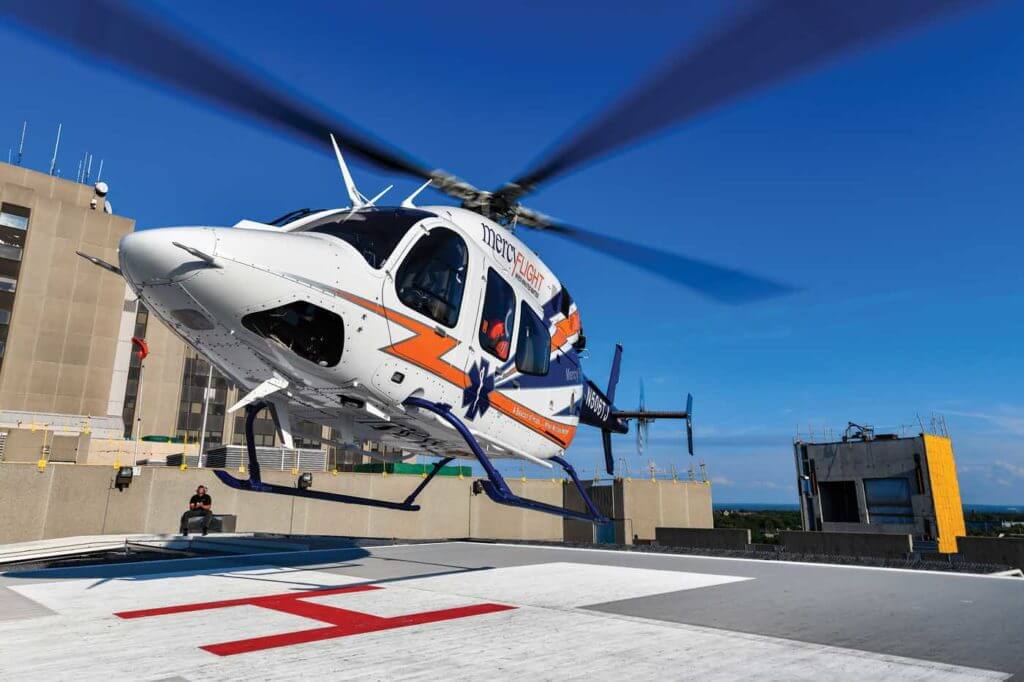
Now, Mercy Flight transports patients to four major hospitals in the Buffalo area — all equipped with rooftop helipads. Aside from Mercy Hospital, the organization frequently flies to ECMC Hospital, John R. Oishei Children’s Hospital, and Buffalo General Medical Center.
Baker said he never imagined the program would grow beyond one helicopter, but as it gained traction, the need for more aircraft became clear. Over the years, the organization has transitioned from the 206B to a few Bell 206 LongRangers, followed by MBB Bo.105s, and then onto Airbus BK117s.
As its BK117 fleet began to age, Mercy Flight made the decision to replace those aircraft with the Bell 429, taking delivery of its first of the type in 2011. In 2018, the program got an additional three 429 helicopters, and officially retired its BK117s.
Now, with a fleet of four 429s and over 200 employees — both ground and air — Mercy Flight has transported thousands upon thousands of patients over the years; in 2018 alone, the organization transported over 12,000 patients with a combination of air and ground ambulances.

“To see this program transform and grow from this fledgling little helicopter program to what it is today has just been a blessing to witness,” said Ferrentino, who was instrumental in helping Baker and Walsh launch Mercy Flight 38 years ago.
The workhorses
The Bell 429 brings several benefits to an operation like Mercy Flight where every minute counts. Topping the list are power and efficiency.
“About half of our calls are on-scene transfers, [and] the other half are hospital transfers,” said Marc Boies, director of flight operations. “With the on-scenes we generally are landing on roadsides, fields, [and] somewhat challenging environments. . . . The nice thing about the Bell 429 is it has the power to get you in and out of anywhere that we operate.”
When a call comes in to Mercy Flight’s communication center, the goal is to get the aircraft off the ground within 10 minutes. Jennifer Crotty, chief flight nurse at Mercy Flight, said the 429’s quick start-up time makes the 10-minute goal easier to reach. The quick shut-down time also allows for the engine to be shut off while loading and unloading patients. “It allows us to be in and out faster,” she said.

Furthering the program’s efficiency, Mercy Flight made the decision to standardize its 429 fleet in terms of the cockpit, medical equipment, and loading platform, which makes operations easier on the organization’s 14 pilots — who completed ground and flight training on the 429 in Fort Worth, Texas.
It was decided that a tactical radio that could be operated in New York and Pennsylvania was necessary, which led Mercy Flight to select the four-band Technisonic 9300 radio — which allows pilots to communicate with fire and law enforcement type agencies.
The 429s also feature a Garmin avionics suite, with the 650/750 touchscreen flight displays, traffic collision avoidance system, helicopter terrain avoidance and warning system, and automatic dependent surveillance-broadcast (ADS-B) in and out. Boies said fuel flow is also integrated into the Garmin, which helps with flight planning for on-scene calls.

The medical interiors on the 429s have been standardized across the fleet, but Boies said the organization started out with a slightly different interior on its first 429, and made the decision to change it when the other three aircraft arrived.
“Over the last five years, we’ve designed a different package to accommodate the myriad of patient transports we could be doing,” he added. “We’re doing more and more specialty transports with balloon [pumps] and ECMO [extracorporeal membrane oxygenation machines]. We’ve always done ICN stat-type incubator transports, too.”
Developed by AeroLite AG, with the completions done by Uniflight Global, the medical interior in Mercy Flight’s 429s allows the aircraft to accommodate the “worst-case-scenario patient,” said Boies.

The interior features three seats in the back with swivels for medical crewmembers, along with a unique loading tray with modified brackets that allows for the ventilator, monitor, oxygen, and IV pump equipment to be stored on one unit. There is also an area on the cabin wall that provides suction on board — charged and powered by the aircraft — with the ability to pull the unit off the wall and bring it right into the hospital with the patient.
The stretcher can hold up to a 480-pound (215-kilogram) patient, while the litter weighs only 22 lb. (10 kg). In the case of bringing a patient out of an entrapment situation, the litter can be taken out of the aircraft and brought right to the scene to load the patient. “There are four different positions that [the litter] can be locked in during the flight, other than for takeoff and landing,” said Boies. “So, it [offers] multiple different areas for the medical crew to work on the patient.”
Mercy Flight recently opted to switch from the clamshell doors to a side-loading door for various safety reasons. “It enhances safety because nobody ever then has to go past the sliding door,” Boies explained. “Ground crews are restricted to that as part of our ground crew safety program. And even the crews for a walk-around — you don’t have to check any security on a clamshell and walk underneath the tail of the aircraft.”
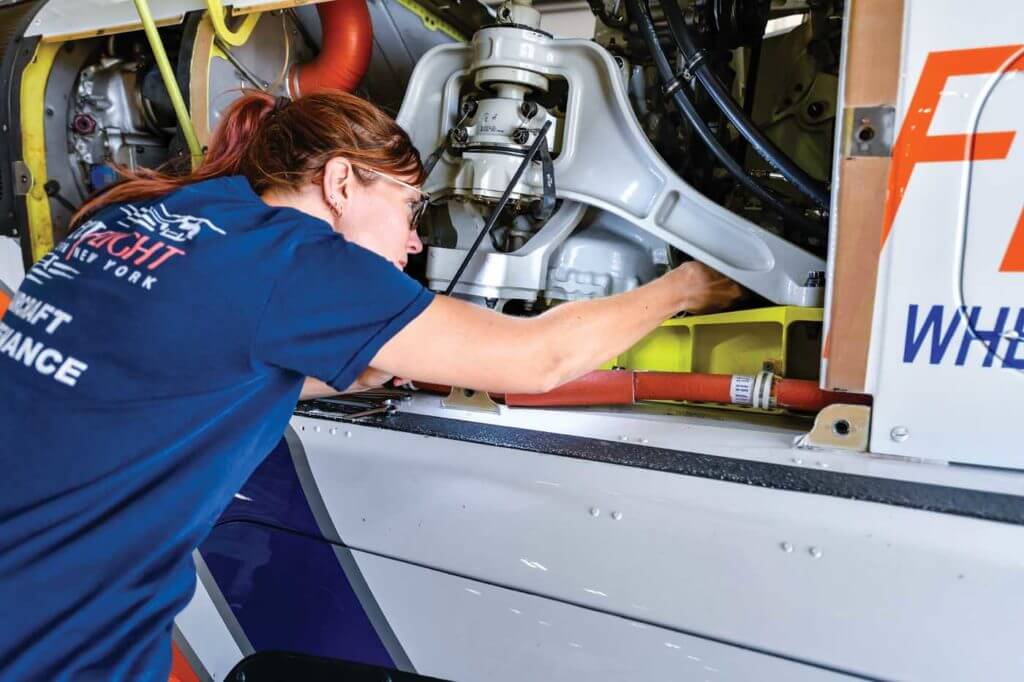
Moreover, “sometimes we will hot load patients and the pilot has better visibility [with the side load] as they come in and out of the aircraft,” he added.
Aside from improved safety, getting rid of the clamshell doors also took 40 lb. (18 kg) off of the aircraft, which is that much more fuel that can be carried, said Rick Parson, director of maintenance. According to Parson, having a fleet of standardized Bell 429s keeps the work inside Mercy Flight’s base hangars running smoothly.
The Buffalo base is a certified repair station, which allows maintenance personnel to remove and install transmissions and engines, and perform the typical maintenance that is done on a 429 in-house. Parson said the 429s are easy to maintain; “the systems seem to be a lot better, and a lot of it is self-diagnostic with the computer systems.”
One thing that has really made a difference on the maintenance side is upgrading the main rotor head on the fleet. The shear bearing on the old-style rotor head would typically only last 800 to 1,000 hours, and would put the aircraft out of commission for two days for repairs. Since doing the upgrade, there has yet to be a failure on a shear bearing in 5,000 flight hours. “Makes our lives a lot easier,” said Parson.
When minutes matter
“At Mercy Flight, we’ve always had the slogan “When Minutes Matter,” said Boies. “Our goal is to safely and efficiently get the aircraft off the ground [and] on the way to the patient, so we can speed up the process to the hospital or the higher level of care.”
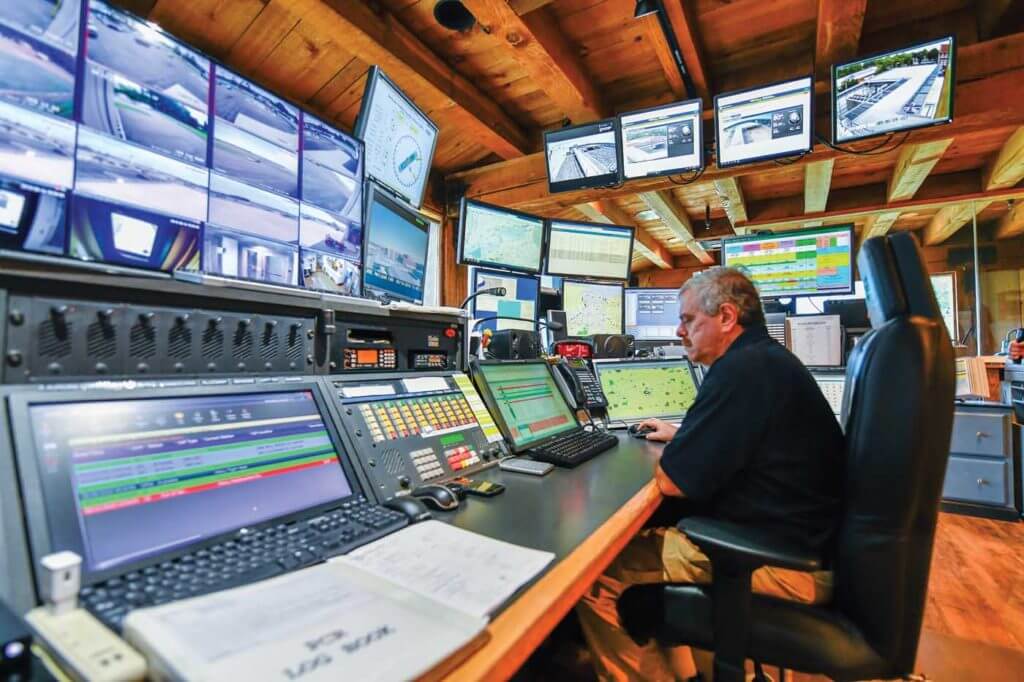
Mercy Flight’s communication center keeps busy with dispatching and monitoring its air and ground ambulance operations on a 24/7 basis. The center staffs two communication specialists — as well as a supervisor and manager during peak times — who are responsible for the intake of emergency or transfer requests from either a 911 center or a facility that is looking to transfer a patient.
Dispatchers have real-time visibility of the 429s thanks to the satellite GPS automatic vehicle locator tracking installed on each aircraft, which is done through SkyTrac.
For additional surveillance, the organization’s bases and the hospital helipads it transports to frequently are constantly monitored by cameras. With an eye on the helipads, Mercy Flight’s communication specialists have the ability to coordinate some landings, either for the organization’s own aircraft or for aircraft from other communities.
“We’re also monitoring a lot of the fire departments and the 911 centers throughout our community,” said Rob Woodford, communication center manager. “And because of that, a lot of times [we have] knowledge of an emergency call as it’s being dispatched to the fire service, and we’re getting ourselves positioned, looking up the location of the incident, and briefing the crew long before the incident commander or fire chief requests for the helicopter to respond.”
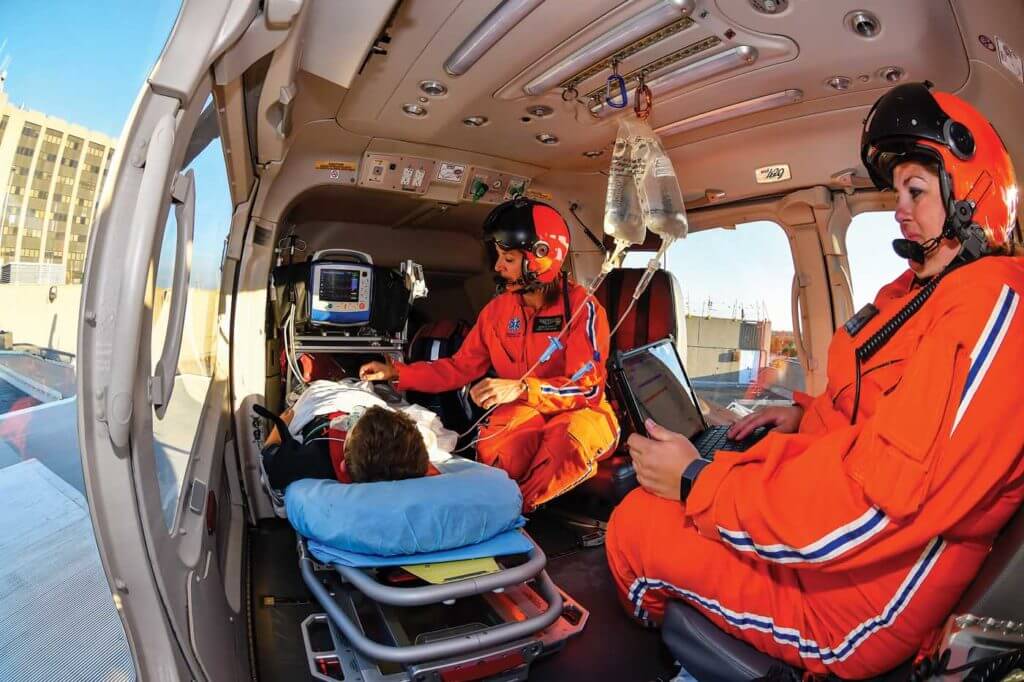
Before Mercy Flight’s 429s leave on a call, the aircraft must be staffed with a pilot, a flight nurse, and a flight paramedic. Upon arrival for each shift, the trio will do an inspection of the aircraft and every piece of equipment to ensure everything is clean, intact, and running properly. A walk-around of the aircraft will also be done by each of the three crewmembers before getting in and lifting off.
Chief flight nurse Crotty said the 429 has made the work in the back of the aircraft a lot smoother — quite literally. “I don’t really ever feel any vibrations,” she said. “And I do give my patients a heads up about that to make them feel a little bit more comfortable.” The 429 also boasts a large cabin, with one rear-facing seat and two front-facing seats that allow for better coordination.
“In the aircraft we are constantly communicating,” said Crotty. “Even prior to a flight . . . if there’s any question on whether or not we should take the flight regarding weather [or] things that are going on in the area . . . we will make a decision together.”
Flying in western New York near Lake Erie and Lake Ontario brings on all types of weather conditions, ranging from lake-effect snow storms to convective activity to severe thunderstorms. “The pilots certainly have to be on their toes to make sure they can get from point A to point B,” said Boies.

While the organization is currently flying under visual flight rules, it is very close to implementing single-pilot instrument flight rules, which will reduce the number of times that flights have to be turned down due to weather.
Being a 24-hour operation, all four of Mercy Flight’s bases are night vision goggle (NVG) qualified and current. The organization now offers NVG training in-house, but initially had Aviation Specialties Unlimited provide the training to pilots and crew.
In addition to the enhanced safety that comes with wearing NVGs, Mercy Flight also boasts a range of critical care and advanced medical capabilities thanks to the crew’s experience and training — both of which are complemented by the range and speed of the Bell 429.
To earn a spot on Mercy Flight’s air medical team, flight crews must have their critical care certificate and/or their flight paramedic certificate.

“Once they are approved, they’ll go through . . . what we call our flight boot camp program,” said Denise Cuillo, director of education and paramedic at Mercy Flight. “They’ll go through orientation and they’ll do some flight training. They do additional classwork and . . . finally a simulation test to see if they’re ready to fly.”
Flight nurses and flight paramedics on the Mercy Flight team also constantly keep up with education and skills during down time, Cuillo added.
All about the care
A non-profit organization since its inception, Mercy Flight has always aimed to keep the cost burden on the community as low as possible, while still maintaining sustainability as a business. Being a 501(c)(3) charitable organization, the program is able to raise donations to supplement its budget.
“Western New York has just been the best place in the world to do that,” said Scott Wooton, vice president of finance. “I think the people here are incredibly generous and really understanding of our mission and what we’re trying to do.”
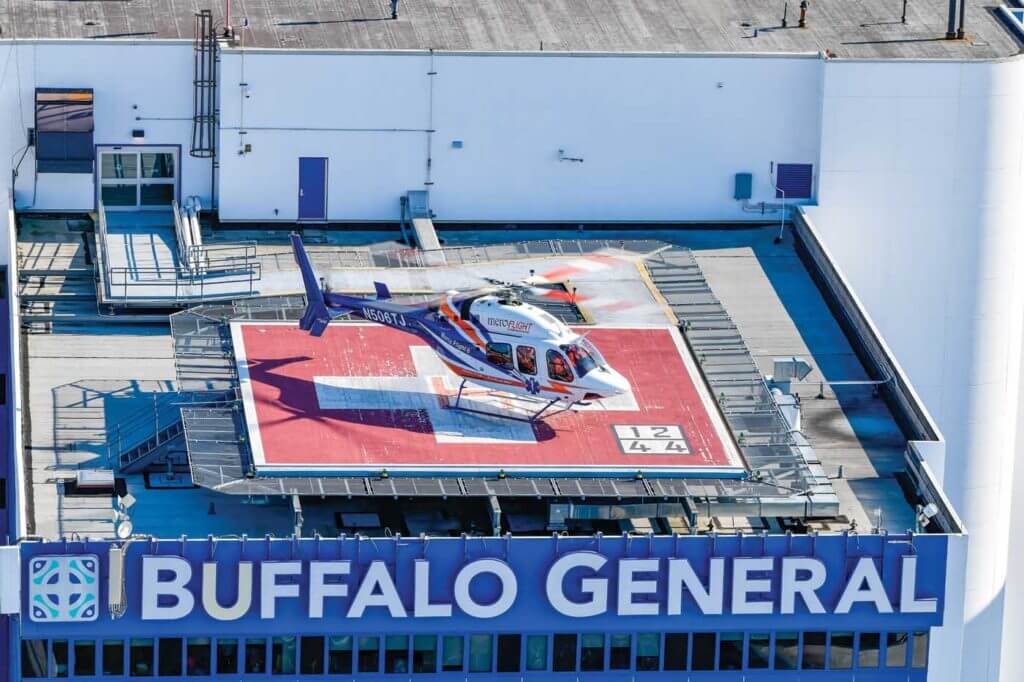
Through its charity care program, Mercy Flight works with patients who are uninsured, under-insured, or going through financial hardship to reduce or forgive some of the costs of receiving air medical care.
“It was never about money,” said Walsh. “It was always about care — offering care that was badly needed. And you didn’t ask the people how much money they had or if they have insurance. That’s why we could be not-for-profit. . . . If [a patient] has no money, [or] if they’re rich, it doesn’t make any difference. If the need is there, we’re going to take care of it.”
Mercy Flight is able to raise upwards of US$700,000 per year through fundraising efforts, said Wooton; for every dollar that is brought in through donations, 90 cents are put back into the program, and the other 10 percent goes to administration and fundraising itself.
Acquiring four $7 million aircraft has been a challenge for the organization, but it has been fortunate enough to get the aircraft under 20-year loans.
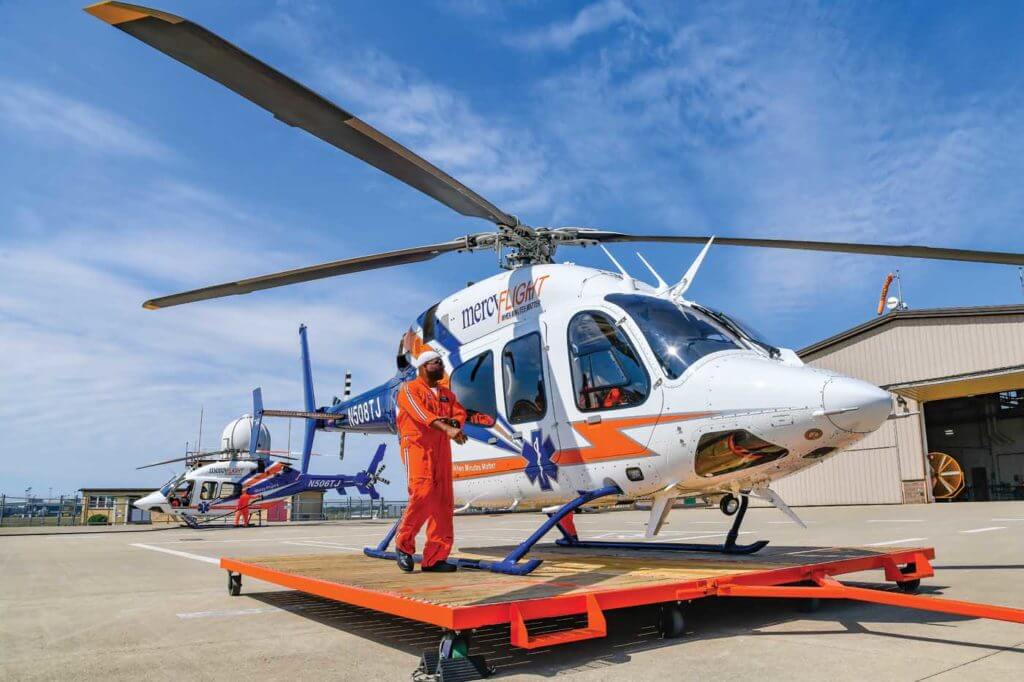
“I never worried about where the money was going to come from, or if it would come,” said Walsh. “I was more concerned with the service that was needed, and I knew that God was going to take care of it. And all these years, He has.”
At Mercy Flight, it has always, and will always continue to be about the patients and the care, first and foremost. These are the standards that Walsh has instilled in the team through the years. And with that said, the people of western New York can know that in times of need, they are in good hands.





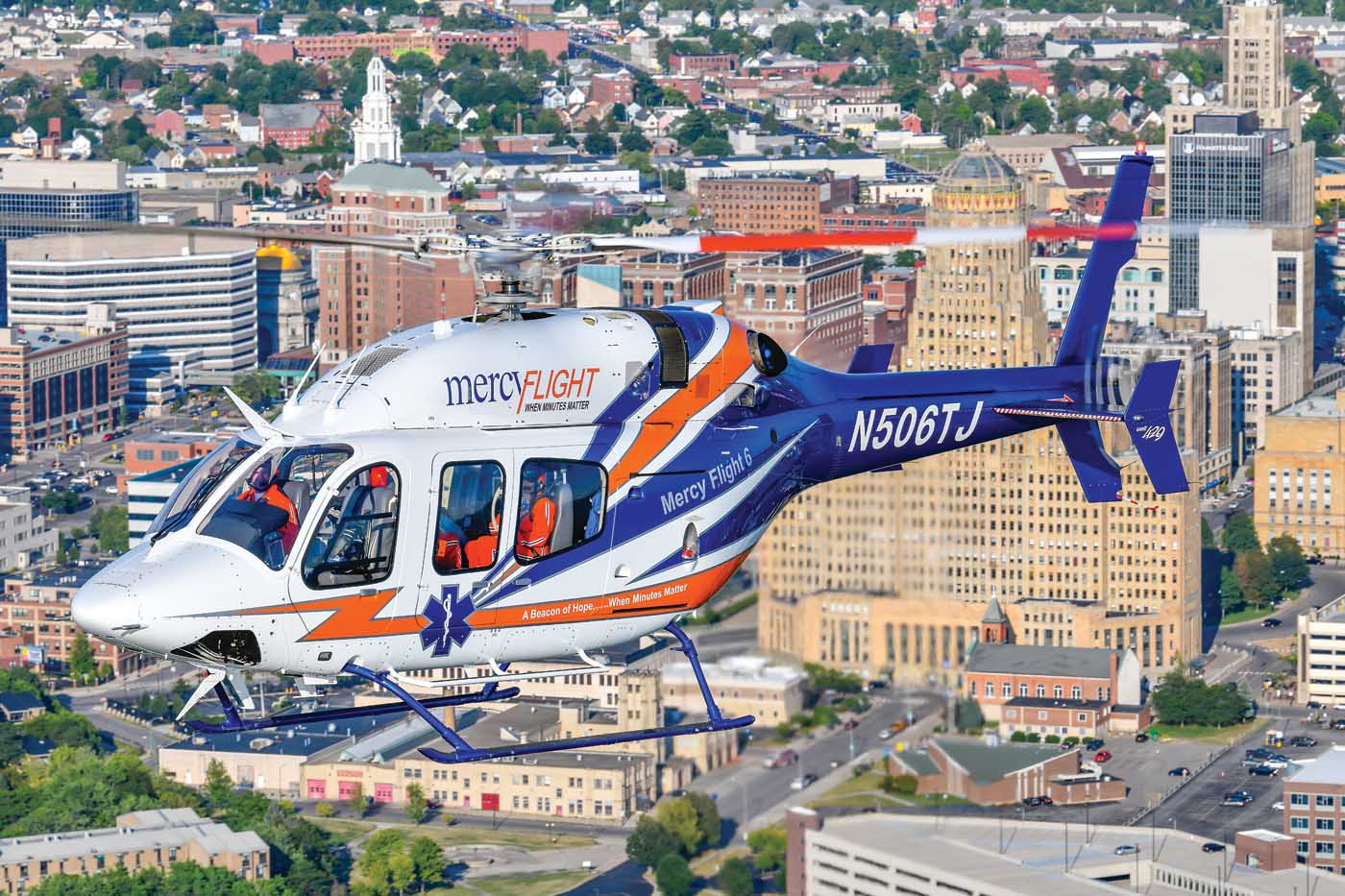
This is the type of organization I would like to work for long-term. Thank you and great article!
Mercy Flight recently opted to switch from the clamshell doors to a side-loading door for various safety reasons. “It enhances safety because nobody ever then has to go past the sliding door,” Boies explained.
Funny. While we all know why the rear clamshell doors are not a handy feature on the Bell 429, which has a conventional tail rotor that crew can walk into while working around the tail of the aircraft. I don’t get it why going past the sliding side doors would pose a safety hazard to anyone!